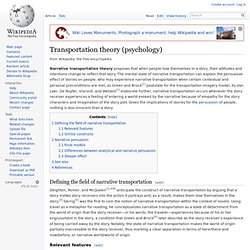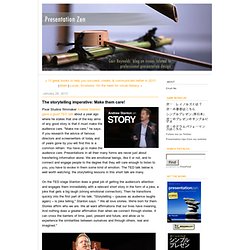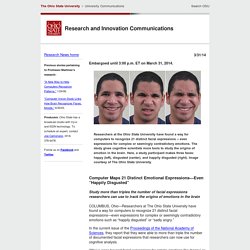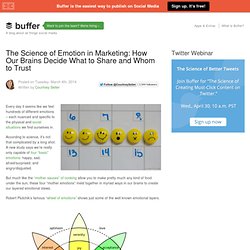

Marketing Storytelling: How To Tap Into Top 4 Emotional Drivers. Transportation theory (psychology) Narrative transportation theory proposes that when people lose themselves in a story, their attitudes and intentions change to reflect that story.

The mental state of narrative transportation can explain the persuasive effect of stories on people, who may experience narrative transportation when certain contextual and personal preconditions are met, as Green and Brock[1] postulate for the transportation-imagery model. As Van Laer, De Ruyter, Visconti, and Wetzels[2] elaborate further, narrative transportation occurs whenever the story receiver experiences a feeling of entering a world evoked by the narrative because of empathy for the story characters and imagination of the story plot. Given the implications of stories for the persuasion of people, nothing is less innocent than a story. Most research on narrative transportation follows the original definition of the construct.
Scholars in the field constantly reaffirm the relevance of three features. Jump up ^ Green, M. Empathy, Neurochemistry, and the Dramatic Arc: Paul Zak at the Future of StoryTelling 2012. The storytelling imperative: Make them care! Pixar Studios filmmaker Andrew Stanton gave a good TED talk about a year ago where he states that one of the key aims of any good story is that it must make the audience care.

"Make me care," he says. If you research the advice of famous directors and screenwriters of today and of years gone by you will find this is a common refrain: You have go to make the audience care. Presentations in all their many forms are never just about transferring information alone. We are emotional beings, like it or not, and to connect and engage people to the degree that they will care enough to listen to you, you have to evoke in them some kind of emotion. The TED talk below is well worth watching; the storytelling lessons in this short talk are many. Energy Exchange Phenomenon. Computer Maps 21 Distinct Emotional Expressions—Even “Happily Disgusted”
Embargoed until 3:00 p.m.

ET on March 31, 2014. The Science of Emotion in Marketing: How We Decide What to Share and Whom to Trust. 13.2K Flares Filament.io 13.2K Flares × Every day it seems like we feel hundreds of different emotions – each nuanced and specific to the physical and social situations we find ourselves in.

According to science, it’s not that complicated by a long shot. A new study says we’re really only capable of four “basic” emotions: happy, sad, afraid/surprised, and angry/disgusted. But much like the “mother sauces” of cooking allow you to make pretty much any kind of food under the sun, these four “mother emotions” meld together in myriad ways in our brains to create our layered emotional stews.
Robert Plutchik’s famous “wheel of emotions” shows just some of the well known emotional layers. In this post we’ll take a close look at each of the four emotions, how they form in the brain and the way they can motivate us to surprising actions. The Basics of Emotional Design. Have you ever thought what makes things ‘good’ or ‘bad’?

The science behind fonts (and how they make you feel) I’ve noticed how seemingly small things like font and the spacing between letters can impact how I feel when reading online.

The right font choice along with the absence of sidebars and popups makes everything feel easier and better to read. Websites like Medium, Signal vs. Noise, and Zen Habits are like yoga studios for content. Their presentation of content puts me at peace while reading, allowing me to fully focus on the stories without distraction. Les femmes, le Pathos et le Storytelling. Ces 3 éléments, bien travaillés, permettent l'entrée en résonance avec le public !

Je tiens à féliciter tout le monde car tout le monde a joué le jeu, chaque histoire est personnalisée, chaque accroche est différente et impactante et chaque appel à l'action bien formalisé, on a réussi à trouver l'équilibre dans l'intégration des ces notions d'Ethos, de Pathos et de Logos dans chacun des discours. Certains m'ont même beaucoup surprise, jouant avec des analogies audacieuses et intégrant de l'humour.
Je me suis rendu-compte cependant...que les femmes avaient beaucoup plus de résistance (même si elles y sont arrivées in fine) que les hommes à intégrer du Pathos dans leurs narration, elles restaient très analytiques et filtraient le contenu émotionnel (pourtant si important pour rendre le discours impactant) Psychology hacks. These heat maps reveal where we feel love, anger, shame & sadness on our bodies. Scientists have conclusively proven that love gives you the warm fuzzies and sadness makes you feel blue.

A team of Finnish researchers have created heat maps of where and how emotions are experienced on the human body. The goal of the study was to find out if there is a consistent connection, across various demographic groups and geographical regions, between what we feel and the physical sensation of that feeling. “Even though we are often consciously aware of our current emotional state, such as anger or happiness, the mechanisms giving rise to these subjective sensations have remained unresolved. Branded Content = Storytelling.